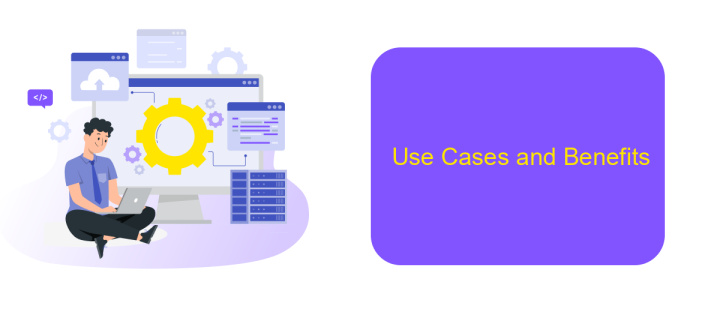iPaaS vs iSaaS
In the rapidly evolving landscape of cloud computing, businesses are increasingly turning to integration solutions to streamline operations and enhance efficiency. Two prominent options are Integration Platform as a Service (iPaaS) and Integration Software as a Service (iSaaS). This article explores the key differences, benefits, and use cases of iPaaS and iSaaS to help organizations make informed decisions.
Introduction
In today's rapidly evolving digital landscape, businesses are increasingly relying on cloud-based solutions to streamline their operations. Two prominent models that facilitate this are Integration Platform as a Service (iPaaS) and Integration Software as a Service (iSaaS). Understanding the differences between these two can help organizations make informed decisions about which solution best suits their needs.
- iPaaS: A cloud-based platform that enables the integration of various applications and services.
- iSaaS: Software solutions designed to integrate specific applications, often tailored to particular business needs.
Both iPaaS and iSaaS offer unique advantages. For example, ApiX-Drive is a versatile iPaaS solution that simplifies the integration of different services without requiring extensive coding knowledge. By leveraging such platforms, businesses can achieve seamless data flow, improve operational efficiency, and reduce the complexity associated with managing multiple software systems.
Definition of Terms

Integration Platform as a Service (iPaaS) is a suite of cloud services that enables the development, execution, and governance of integration flows connecting any combination of on-premises and cloud-based processes, services, applications, and data. iPaaS solutions are designed to simplify the process of integrating different systems and applications, providing tools and pre-built connectors that facilitate seamless data flow. A popular example of an iPaaS solution is ApiX-Drive, which offers a user-friendly platform for setting up and managing integrations without the need for extensive coding knowledge.
Integration Software as a Service (iSaaS), on the other hand, refers to software solutions delivered as a service that specifically focus on integration capabilities. These platforms typically provide similar functionalities as iPaaS but are often more specialized in their approach, targeting specific integration challenges or industries. iSaaS solutions can be more flexible and customizable, allowing businesses to tailor their integrations to meet unique requirements. Both iPaaS and iSaaS play crucial roles in modern IT ecosystems, enabling efficient and effective data and application integration across diverse environments.
Key Differences

iPaaS (Integration Platform as a Service) and iSaaS (Integration Software as a Service) are both designed to streamline integration processes, but they differ significantly in their approach and functionality.
- Deployment: iPaaS is cloud-based, offering a scalable and flexible solution without the need for on-premises hardware. In contrast, iSaaS may require on-premises deployment, making it less flexible but potentially more secure.
- Customization: iPaaS platforms like ApiX-Drive provide extensive customization options, allowing businesses to tailor integrations to their specific needs. iSaaS solutions often come with predefined templates, offering less flexibility.
- Maintenance: With iPaaS, the service provider handles maintenance and updates, reducing the burden on internal IT teams. iSaaS solutions might require more hands-on management and regular updates from the user.
- Integration Complexity: iPaaS solutions are typically designed for complex, multi-cloud environments, whereas iSaaS solutions are often simpler and suitable for straightforward integrations.
In summary, while both iPaaS and iSaaS aim to simplify integration, iPaaS offers greater flexibility and scalability, making it ideal for businesses with complex integration needs. Tools like ApiX-Drive exemplify the advantages of iPaaS by providing robust, customizable integration solutions without the need for extensive internal resources.
Use Cases and Benefits

Integration Platform as a Service (iPaaS) and Integration Software as a Service (iSaaS) offer distinct advantages for businesses looking to streamline their workflows and enhance connectivity between various applications. While iPaaS provides a comprehensive framework for integrating multiple cloud services, iSaaS focuses on delivering specialized integration solutions tailored to specific needs.
One of the primary use cases for iPaaS is automating business processes by connecting disparate systems, allowing for seamless data flow and real-time updates. iSaaS, on the other hand, is often used for targeted integrations, such as linking CRM systems with marketing automation tools to improve customer engagement.
- Enhanced data synchronization across platforms
- Improved operational efficiency through automation
- Scalability to accommodate growing business needs
- Cost savings by reducing manual intervention
Services like ApiX-Drive exemplify the benefits of iPaaS by offering easy-to-use tools for setting up integrations without the need for extensive coding knowledge. This allows businesses to quickly adapt to changing requirements and maintain a competitive edge in their industries.
Conclusion
In conclusion, both iPaaS and iSaaS offer unique advantages for businesses looking to streamline their operations and enhance their integration capabilities. While iPaaS provides a comprehensive platform for integrating various applications and data sources, iSaaS focuses on specific integration needs with tailored solutions. The choice between the two largely depends on the specific requirements and scale of the business.
For companies seeking a versatile and scalable integration platform, iPaaS solutions like ApiX-Drive offer robust features that simplify the process of connecting disparate systems. On the other hand, businesses with more focused integration needs might find iSaaS to be a more cost-effective and efficient option. Ultimately, understanding the unique strengths of each approach will help organizations make informed decisions that align with their strategic goals and operational needs.
- Automate the work of an online store or landing
- Empower through integration
- Don't spend money on programmers and integrators
- Save time by automating routine tasks
FAQ
What is the main difference between iPaaS and iSaaS?
Which is better for small businesses, iPaaS or iSaaS?
Can iPaaS handle real-time data integration?
What are some common use cases for iSaaS?
How does ApiX-Drive facilitate integration and automation?
Apix-Drive will help optimize business processes, save you from a lot of routine tasks and unnecessary costs for automation, attracting additional specialists. Try setting up a free test connection with ApiX-Drive and see for yourself. Now you have to think about where to invest the freed time and money!


